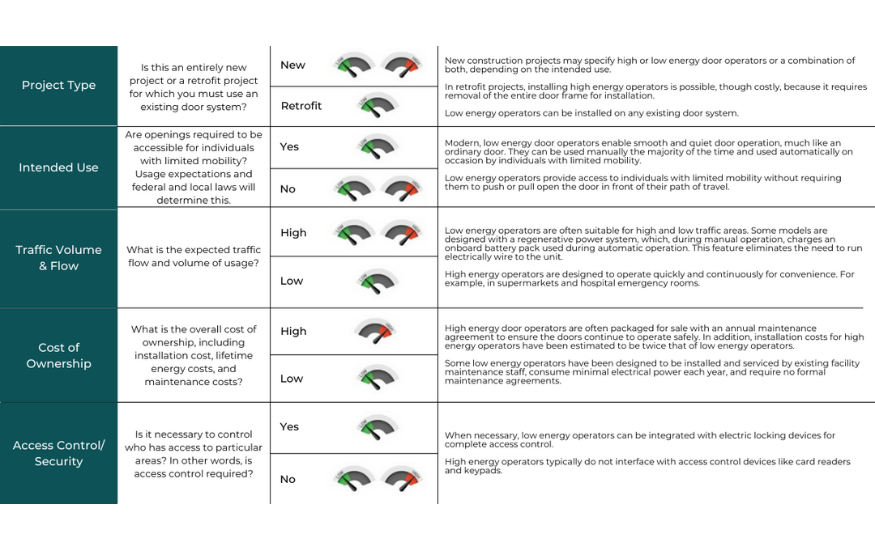The Fundamental Difference Between Low and High Energy Door Operators
A low energy door operator assists individuals with limited mobility whereas a high energy door operator provides continuous automation for all.

Which doors need a motorized assist to open and close? Any that require hands-free assistance.
A door operator is an electronic device that automates door operation. These are available as high and low energy models. While both have their benefits, it’s important to understand they are used in separate applications.
A low energy door operator assists individuals with limited mobility whereas a high energy door operator provides continuous automation for all.
The Purpose of a Door Operator
With door operators, energy has nothing to do with power consumption. Instead, it refers to the amount of force that the operator applies to the door. This is because every door has mass that is moving as it opens and closes. Consider how a heavy door requires greater force to move than a lightweight one. Energy relates to the opening speed.
Just like a garage opener, a door operator makes things easier for the user. But not every door has the same operating requirements. Low and high energy operators differ in five crucial ways: project type, traffic, location, installation and maintenance costs, and security.

High Energy Operators
Ever walk through an automatic door at a busy store or hospital? A high energy operator works with exterior doors that need to open quickly hundreds or thousands of times a day. They are completely automatic so users only need to walk forward.
High energy door operators are a significant upfront investment because the door operator is only one part of the entire assembly. A high energy door is a complete system that includes the frame, door, activation sensor, and presence sensor; swinging versions also need a safety rail. This is not a retrofit solution – it must be specified as part of a new construction project or as a complete replacement during a renovation.
Low Energy Operators
Low energy door operators are used when manual operation is the default setting but there needs to be an automatic option. This eliminates the door being an accessibility barrier for people with limited mobility. Imagine having a physical impairment or injury – a door shouldn’t create a situation where someone might struggle to use it.
Low energy door operators allow users to choose to activate the door whenever needed. The automation is initiated by a pressable wall switch or wave-to-open sensor. For retrofits, especially where a hardwire solution might be a challenge, there are also radio frequency devices that run on batteries.
A low energy door operator can be easily used by:
- A person using a walker, wheelchair, or mobility scooter
- A parent or caregiver with a stroller
- A worker pushing a delivery cart, dolly, or hand truck
Another significant advantage of a low energy operator is that it can be installed on existing doors. Only the operator and an activation device need to be added. The door, frame, and hardware do not need to be modified; no additional safety devices are required either. This is ideal for retrofits, upgrades, or architectural preservation projects that need to satisfy ADA.
We offer a portfolio of low energy operators. They feature intelligent functions, including power close, latch assist, and obstruction detection:
Click here to contact our team to determine the best low energy operator for your openings, or fill out the form below.